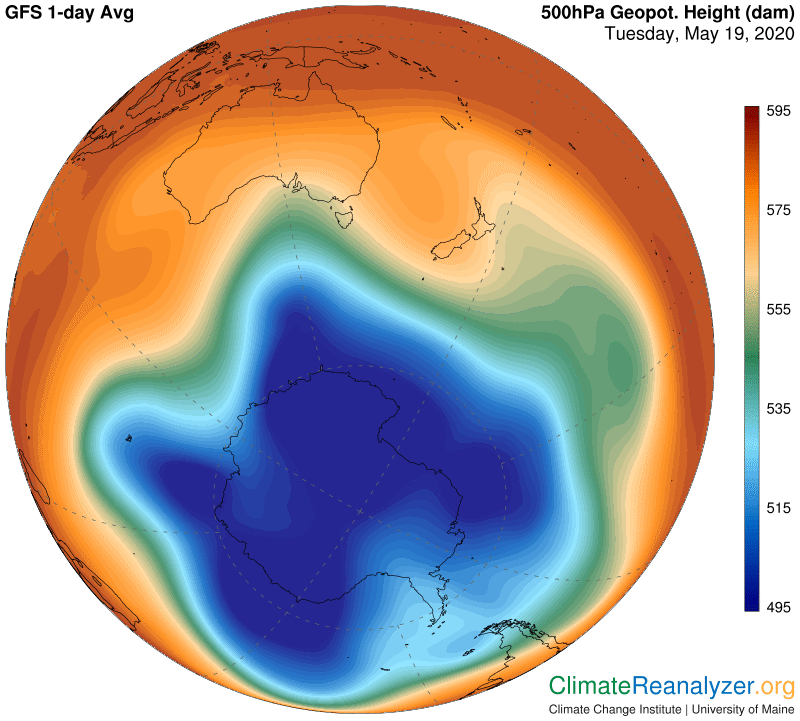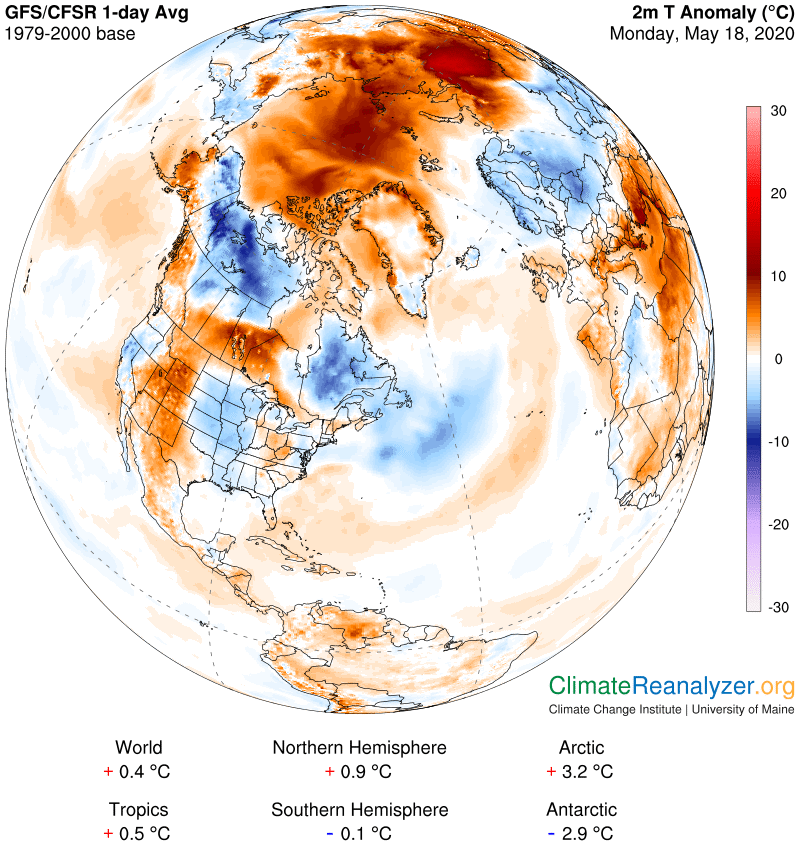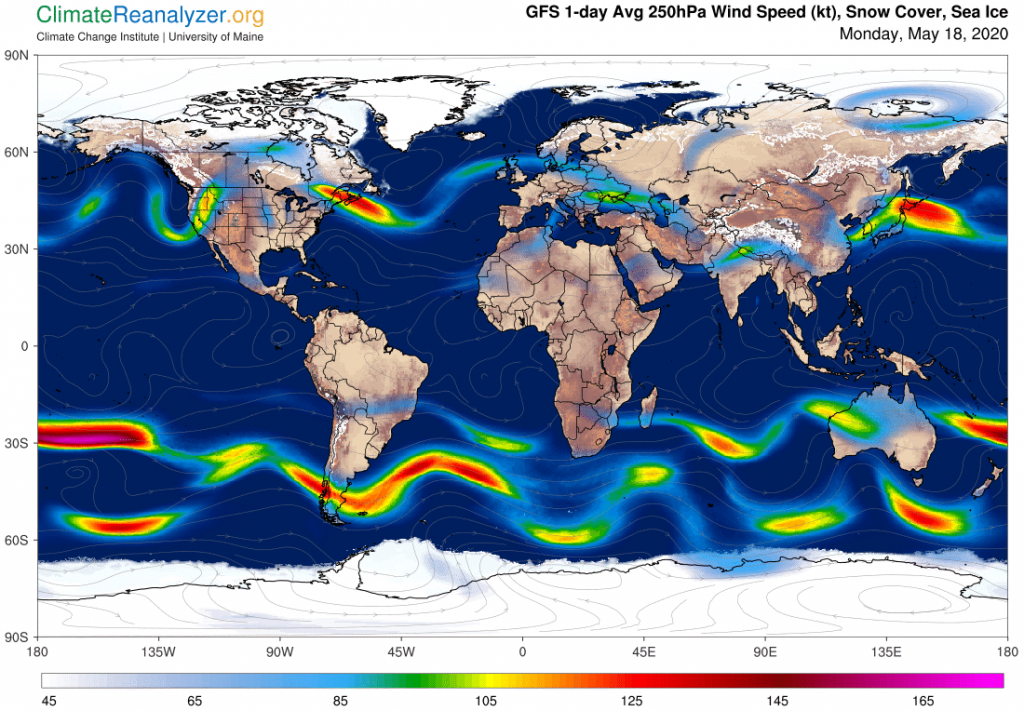The small doughnut-shaped jetstream we were looking at as recently as Monday is now gone, and with it the island of light red that had popped up inside of the green zone. The cause is not hard to find. A weakness in the middle-track jetstream pathway (as defined yesterday) allowed the track to be completely breached by forces emanating from within the red zone, which has now captured and fully absorbed the unique, out-of place “pressure island” that had formed inside. The next image shows how widely the breach has opened in just two days. The precise forces that caused it to open are not completely certain, but I think they must somehow be associated with the natural tendency of high-altitude airborne streams of precipitable water to push their way toward the nearest pole by any possible route.
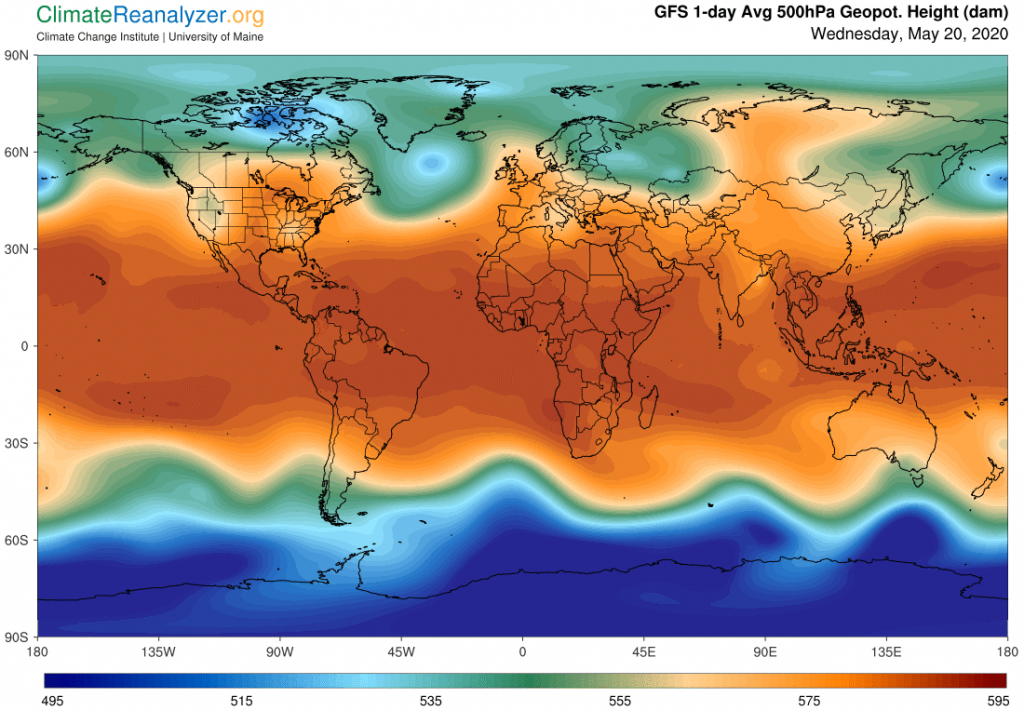
As you can see, the red zone is now making an unusually close approach to the pole. Is this a historic event? I have no records on hand to go by, but we do know from temperature records that something of an unusual nature is going on and this may well be an important reason. (For a relevant news report, see https://www.independent.co.uk/environment/arctic-sea-ice-temperature-spring-record-high-melt-climate-change-environment-a9519931.html.) I have some doubts about the idea that “warm air has moved in,” but I am quite sure that well-moistened air has moved in, or rather over, the Arctic region, at an altitude several miles high, and that a powerful greenhouse effect can be expected down below as a consequence. Here is an image of what the high-up water content now looks like when measured at the exact spot of the breach, plus where it has spread out to well beyond that spot:
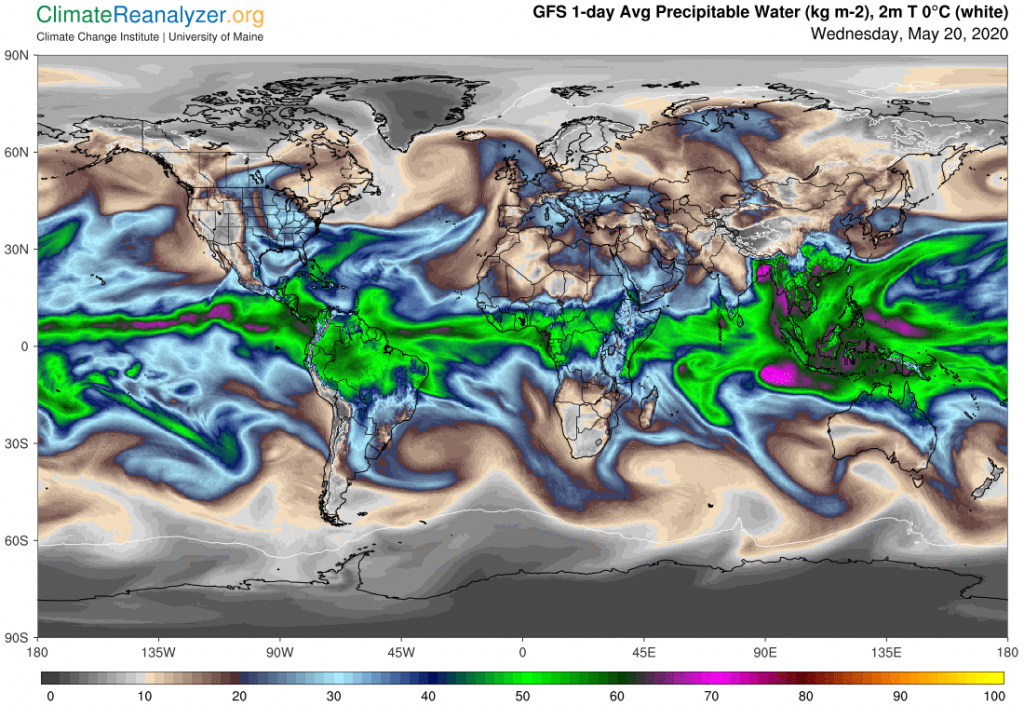
And here is a current view of the massive temperature anomaly that is emergent from the same spot, probably also due in part to overhead water vapors added by incoming streams in other locations that are not quite as advanced as the one we are mainly looking at:
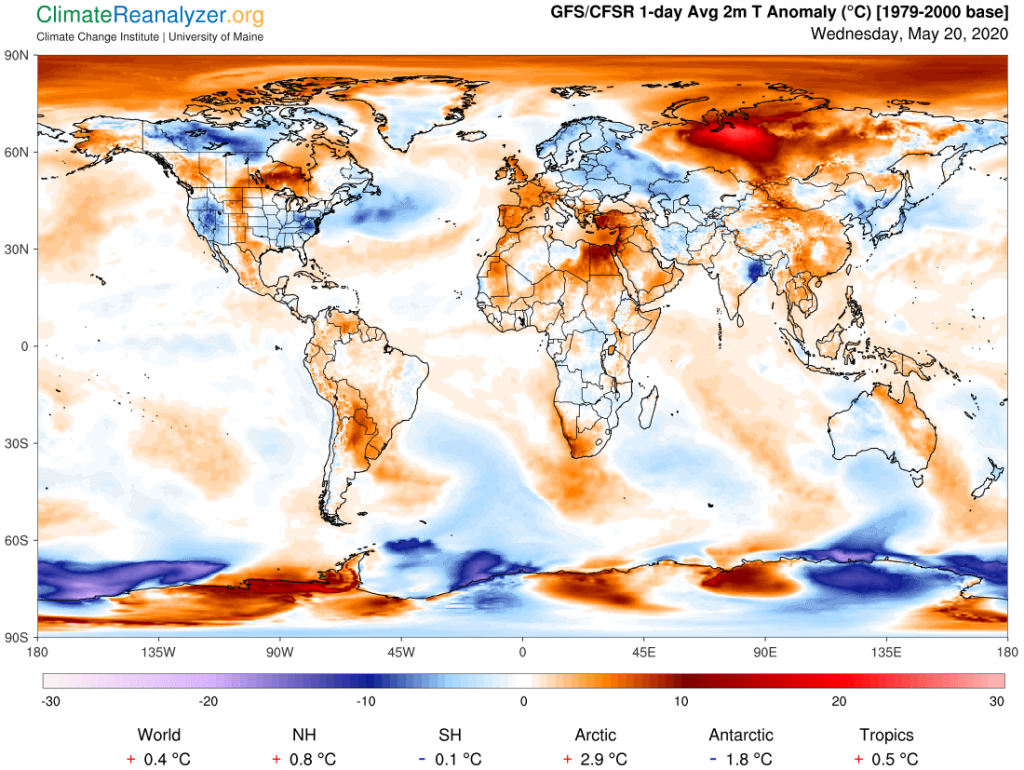
While we are here, what about all of those regions in the north that are showing cold anomalies, especially the large one across northern Canada lying partly within the Arctic circle? Why is it so different? Good question, and there is a good answer, which also helps to illustrate some of the points made in the jetstream analysis presented in yesterday’s letter. For this I will need to show two more map images, the first of which also contains a separate view of the major intrusion over on the Asian side:
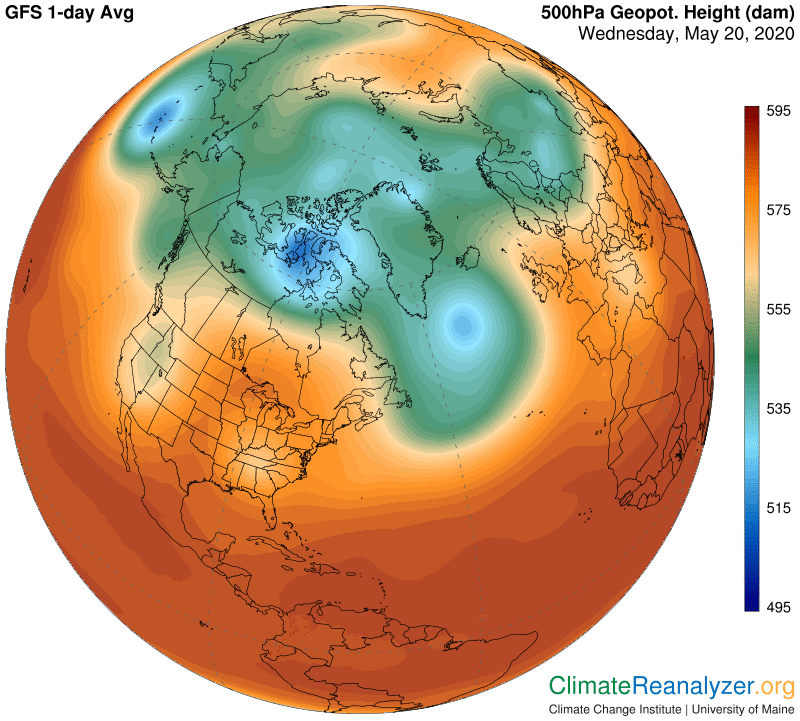
In this case, by following the thin yellow line that borders the green zone, we see a reasonably strong middle-track jetstream that is better able to hold off the pressures of any airborne water streams that happen to be hanging around. We also want to focus on the smallish remnant patch of deep blue, just north of Hudson Bay, which is encircled by a fairly potent jetstream of its own. An active piece of that stream can be seen on the following image, placed just above and partly merged with a similarly active jet generated by the middle track. The total combination is quite powerful, placed in such a way that the entire region around this blue zone is now receiving a much less than average amount of overhead water compared with what it usually receives at this time of year—and for the same reason a much lower than average greenhouse effect is generated at the surface down below. I believe nothing else is required in order to have a much lower than average temperature for the day, nothing at all.
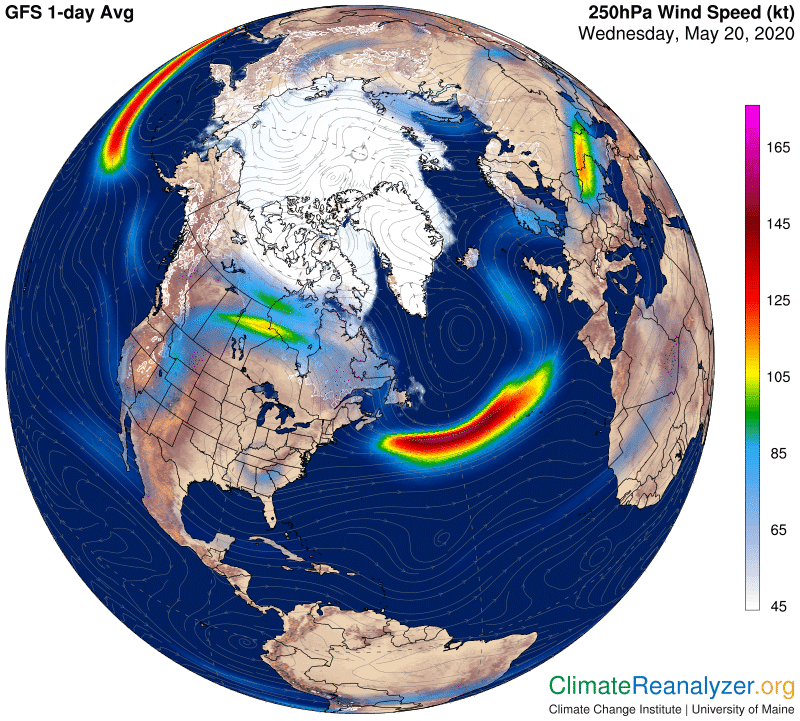
Carl
